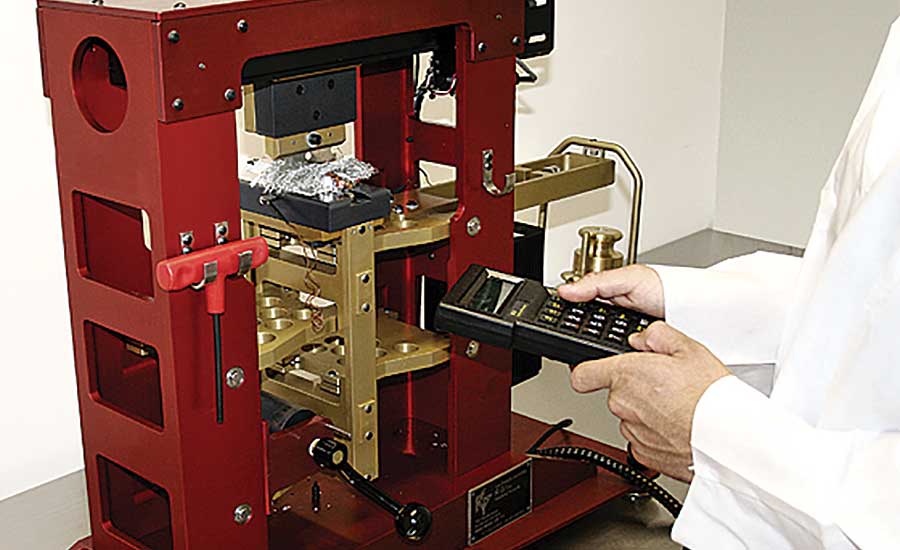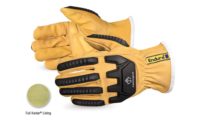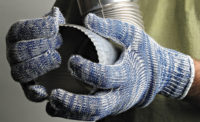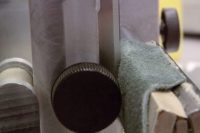When it comes to choosing cut-resistant gloves, the first choice you need to make is which standard you’ll be using. For the most part, this comes down to your geographical location. In North America, ANSI/ISEA 105 is king, whereas in Europe and parts of Asia, EN 388 is the preferred test standard.
This article explores the differences between the two standards so that you know exactly what you’re getting when selecting a cut-resistant glove.
How is cut resistance measured?
Both standards outline specific tests to measure the force it takes for a blade to cut through the test material. But the tests that each standard use to determine this makes a big difference in the outcomes.
ANSI/ISEA 105-2016
The North America standard for measuring cut-resistant materials is based on the American Section of the International Association for Testing Materials (ASTM). There have been several updates over the years, but this article will focus on the newest ASTM standard released in 2015 – ASTM F2992 – Standard Test Method for Measuring Cut Resistance.
This edition of the standard made a decision that the Tomodynamometer (TDM-100) would become the definitive machine for testing cut resistance in North America.
Prior to this move, there were two options for test machines that were like the TDM-100. But the decision to choose one test was for the sake of simplicity.
The steps for measuring cut resistance using the TDM-100:
- The glove sample is placed on a conductive strip and loaded onto the TDM-100.
- A straight blade is loaded on to the machine.
- Weight is added to serve as force.
- The blade moves across the fabric.
- The blade is replaced with a new one to ensure accuracy.
- The sample is cut five times, each with three different load.
- The distance traveled to cause cut through at various forces is recorded.
- When the razor blade touches the metal conductive strip, the test is terminated.
- An average is calculated for the grams to cut
EN 388
The European standard for measuring cut-resistant materials is called the European Standards for Protective Gloves. In 2016, the European standards, like the North American standards, were updated to better measure cut resistance.
Prior to 2016, the Coup Test was the preferred machine for measuring cut resistance.
The steps for measuring cut resistance using the Coup Test:
- A test sample is taken from the palm of a glove.
- A rotating circular blade moves back and forth across the test sample until a cut-through is achieved.
- The test sample is compared to a reference material (usually cloth).
- The reference material and the test sample are cut alternately until at least five results are achieved.
- To help account for a loss is sharpness to the blade, the reference material is cut before and after the test sample.
- The cut resistance is a ratio of the number of cycles needed to cut through the test sample compared with the reference material.
When EN 388 was revised in 2016, a decision was made that the TDM-100 would become the cut testing machine of choice in Europe. This was to ensure consistency between different standards.
But for a product to legally be sold in Europe, it has to be CE certified. The CE certification rules were not updated to reflect the European cut standards amendment. This means that even though the TDM-100 has become the testing machine of choice, if a manufacturer wants to sell their cut-resistant glove in Europe, they must have tested and certified on the Coup Test machine.
The most common complaint about the Coup Test was that the blade would dull during the test, especially over highly-engineered yarns – those featuring steel or glass.
The 2016 revision decided that if the blade made 60 passes over the test fabric, the testing house must stop the Coup Test and use the TDM-100 test as outlined under the ISO 13997 standard. The steps will be the same as under the ANSI/ISEA 105 standard except for one notable exception. The glove will be rated in Newtons of force rather than grams of force to measure cut through.
To accommodate the new addition, the EN 388 marking will now feature a new rating. This rating will appear at the end of the row. Unlike the other ratings, which are numerical, the new addition will appear as a letter between A (2 Newtons or 203 grams) and F (30 Newtons or 3059 grams).
Which test method is better?
Prior to the incorporation of ISO 13997, the ANSI/ISEA 105 standard was preferred in the industry because of its accuracy. However, now that the EN 388 standard uses the TDM-100 for part of its testing, it’s not so black and white.
ANSI could still be considered the superior standard because of its simplicity and reducing the risk of making an error during the testing process because:
- The blade is changed after each test to prevent dulling
- It’s straightforward – there’s no comparing the material to a test cloth
- It’s suitable for all types of gloves
Conclusion
Regardless of the test you are using, it’s important to remember that these tests are not equivalent. A glove that withstood 3059 grams of cut force on the Coup Test (CE cut level 5) will not automatically be an ANSI level A6. The glove must be tested using a TDM-100 to determine this, and vice versa.






